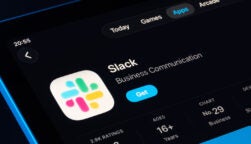ChatGPT creators OpenAI launched GPTs back in November of 2023. GPTs are custom versions of ChatGPT that users can create to fulfill a specific purpose or task, such as pulling out action points from a document or providing tech support.
Since then, a huge range of GPTs have been built by ChatGPT Plus subscribers and made available for other users to access, and have been used hundreds of thousands of times by people eager to find new ways to save themselves time with AI.
While there are several weird and wacky GPTs available through the ChatGPT store, there are a few that a lot of workers will find useful. In this guide, we’ll show you the powers and capabilities of 11 of the best GPTs currently available via the store.
What is a GPT, and How Do They Work?
A “GPT” is the name that OpenAI has given to the range of custom chatbots that ChatGPT Plus subscribers have been building since OpenAI made the feature available on DevDay, November 2023.
GPTs are user-designed chatbots that serve specific purposes – and skills not bestowed onto the standard version of ChatGPT – such as creating videos.
GPT stands for “generative pre-trained transformer” and was originally the name given to the class of AI models produced by OpenAI to power products like ChatGPT. The most advanced model currently available is GPT-4, but the free version of ChatGPT is powered by GPT 3.5.
ChatGPT Plus customers prepared to pay the $20 per month subscription fee can access each other’s GPTs on the “Explore GPTs” section of the ChatGPT UI, also known as the GPT Store. Very soon, creators will actually be able to earn money directly from their GPTs, OpenAI has said.
 This just in! View
This just in! View
the top business tech deals for 2026 👨💻
The Best GPTs to Save You Time at Work
Here are the 11 best GPTs we’ve found on the OpenAI store that will help you save time at work, from troubleshooting technical issues to sifting through academic papers at lightning speed.
- Canva – Best Low-Effort Graphic Design Tool
- Image Generator – Best for Generating Images
- Merlin – Best Job Application Automator
- Veed.io – Best for Generating Video Content
- Diagrams: Show Me – Best GPT for Generating Diagrams
- Consensus – Best for Searching Academic Papers
- Tech Support Advisor – Best GPT for Troubleshooting Tech Issues
- Briefly – Best Text-Shortening GPT
- Prompt Perfect – Best for AI Prompt Optimization
- Logo Generator – the Best GPT for Generating Unique Logos
- Scheduling Wizard – Manage Appointments and Meetings
To create this list, we’ve sifted through hundreds of GPTs. We’ve included standout chatbots that can complete tasks that would take humans hours in minutes, and have clear business applications. We also considered how many times they’d been used by other users, as well as the quality of the chatbot’s responses and outputs.
1. Canva – Best Low-Effort Graphic Design Tool
Name: Canva
Creator: Canva.com
Conversations: 600K+
If you’re working in any role that requires you to produce any kind of media – from posters and charts to logos and branded content – then this Canva integration is a must-have.
Now, the Canva integration has created a lot of buzz since it was made available; it was one of the first GPTs to be built after OpenAI launched the GPTs feature back in November 2023. We wanted to see what it would generate when given a non-tailored, very basic prompt about a poster for a seasonal sale:

Designing a seasonal sales poster with Canva. Image: Tech.co
As you can see from the image, while it might need a little editing, it’s almost there. It was able to take into account several different – and arguably competing – themes (“subtle” and “macho”), gave us two very serviceable poster designs, and intelligently filled in the gaps left by our relatively vague, unrefined request.
Canva takes the top spot on this list because of the quality of output combined with the complexity of the tasks. We’ve used it quite a lot at Tech.co, providing it with more complex prompts, and it always delivers impressive designs.
2. Image Generator – Best Image-Generating GPT
Name: Image Generator
Creator: Naif J Alotaibi
Conversations: 500K+
If you’ve been following the AI revolution taking place over the past year, the chances are you’ve heard of DALL-E. The AI image-generating tool was initially created by OpenAI as a standalone product, but now, it’s integrated into ChatGPT.
However, you can still use DALL-E’s image-generating capabilities as a GPT. On the DALL-E section of the store, there’s a bot aptly named “Image Generator” that has been used over 500,000 times by ChatGPT Plus subscribers.
If you’re looking for an image generator for work, this is the best one for it – the bot specializes in “generating and refining images with a mix of professional and friendly tone”, so is a great option for producing images for articles, content, and other types of media.

An image we generated using Image Generator. Image: Tech.co
The images created are (most of the time) extremely high quality and align closely to the prompts inputted into the chatbot, such as the image we created above during testing.
If you’re using AI tools to generate images, ensure you’re doing this in a transparent fashion and with buy-in from your manager or supervisor.
3. Merlin – Best Job Application Automator
Name: Merlin
Creator: Feridoon Malekzadeh
Conversations: 5K+
Merlin is a job application “wizard” that will take you through the entire job application process, from resume building to the submission stage, ensuring you’ve not missed anything out along the way.
When you open the GPT, Merlin will ask you if you want to follow the “10 steps” to get a job, which appears near the text input box as a prompt suggestion. Step 1 is simply researching the company – a must-do task for all applicants.
All you need to do is provide the name of the job you’d like and the company that is advertising it, and then Merlin will scour the internet for information on the company, the role itself, and the requirements:

Researching a job with Merlin. Image: Tech.co
If you don’t want to follow the whole 10-step process, you can just get the bot to help you with tasks such as creating a tagline for the top of your CV, or big tasks like generating a personalized cover letter based on a small prompt, like this:

Generating a cover letter from scratch with Merlin. Image: Tech.co
Compared to the cover letters we’ve produced by the standard version of ChatGPT, Merlin’s efforts are generally more personalized and better written on the whole. When reading through the extended version of the cover letter pictured above, there were very few points that needed editing, despite the basic nature of the prompt provided. Without the GPT, creating a cover letter of this length and quality would take several hours to write and refine.
As you’re probably already aware, searching for jobs is a long, arduous process at the best of times. Merlin, however, is a helpful, time-saving option to have at every step of the process – except the face-to-face interview, of course.
4. Video GPT by Veed – Best for Generating Video Content
Name: Video GPT (By Veed)
Creator: Veed.io
Conversations: 200K+
Veed GPT is a video-generating GPT that has had more than 200,000 conversations to date with ChatGPT customers.
After a short prompt and a few clarificatory questions (we asked it to create an advertisement for a coding course) Veed generated a promotional TikTok for us within seconds for us, with a voiceover and subtitles.
After the video was completed, it took us through to the Veed studio and allowed us to make small tweaks to the video. However, you can also ask the Veed GPT to make changes yourself. The finished product was pretty impressive considering it took 3 minutes to generate.






Asking Veed for a promotional video for a mock website. Image: Tech.co
For companies and individuals who want to get off the ground and promote themselves across multiple social media channels, Veed’s ability to generate videos quickly based on basic prompts will be a godsend.
Granted, it’s not movie quality – and the voiceover sounds a little robotic – but what Veed created in just a few minutes would take someone unfamiliar with video editing hours or even days to create.
5. Diagrams: Show Me – Best GPT for Generating Diagrams
Name: Diagrams: Show Me
Creator: helpful.dev
Conversations: 200K+
A lot of employees create diagrams and charts every week to display important data to their teams during presentations. But sometimes, this can become a frustratingly time-consuming task, especially if you don’t want your diagrams to look like they were thrown together at the last minute.
Diagrams: Show Me, however, provides a speedy solution to this with its GPT. All you need to do is describe the type of diagram you’d like, and it’ll generate a comprehensive diagram at a moment’s notice. It’s really that simple.




Two diagrams we generated with Diagrams: Show Me. Image: Tech.co
There’s a huge range of charts and graph types you can ask it to create, and it’s able to pull through the latest data and figures from the internet too – although we’d always recommend double-checking the figures before you present it to any of your colleagues.
6. Consensus – Best for Searching for Academic Papers
Name: Consensus
Creator: consensus.app
Conversations: 1M+
Consensus is an academic research GPT that will trawl through a variety of peer-reviewed papers and point you to anything you need, on any subject – in total, that’s over 200m academic studies, surveys, and reports.
While this will be particularly useful for high school and university students – and perhaps faculty staff at educational institutions – it’ll save anyone who often references scientific papers or studies in their job heaps of time, including third-sector workers and researchers.

Finding sources with Consensus. Image: Tech.co
Not only does Consensus source papers rapidly, it also lays them out in a way that ensures you don’t have to read the entire paper – or even click on it – to know what it’s about, and what conclusions were drawn. It can also provide studies that contain counter-points and differing viewpoints if you ask for them as well.
7. Tech Support Advisor – Best GPT for Troubleshooting Tech Issues
Name: Tech Support Advisor
Creator: ChatGPT
Conversations: N/A
The Tech Support Advisor bot created by ChatGPT will help you troubleshoot computer issues all on your own, thanks to a vast functional knowledge base of information relating to a wide range of common technical hitches.
When we asked it a question about a problem with our network connection and included information about the VPN we use, it gave us an exhaustive list of potential issues and how the software may be impacting internet connectivity, as well as accompanying solutions.

Asking ChatGPT’s Tech Support Advisor for help. Image: Tech.co
All of these solutions are valid things you should be checking if you experience this kind of technical issue. Importantly, however, they’re displayed in plain English and you don’t need to be a tech whizz to understand them – the same cannot be said for Google Search results.
This GPT is a great example of the kind of custom chatbot that solves a problem that you may have experienced when searching for answers to something technical on Google.
Sometimes, tech issues are quite specific, and sifting through the answers written four years ago on a tech forum to find some advice that’s vaguely related to the problem you’re having doesn’t help, nor do tech blogs too complex for the average person to understand.
These tailored solutions and responses are a lot more actionable, a lot quicker to find, and set out more clearly.
8. Briefly – Best Text-Shortening GPT
Name: Briefly
Creator: S Kulesh
Conversations: 1K+
Briefly is a text-shortener that does exactly as its name suggests. Below, we pasted in a news article about a British man who’s currently attempting to run the length of Africa. In just a few seconds, Briefly pulled out all the key information and repackaged it into a bullet-pointed list.

Shortening text with Briefly. Image: Tech.co
We tested this with several articles, and Briefly returned correct information every time. Although we used an article as a test, you can see how useful this might be if you want to draw the key points out of a work document without reading the whole thing.
Now I know what you’re thinking… can’t I just use ChatGPT to do this, rather than a GPT created by a user? Yes, but you’ll have to be a lot more specific with your prompt, or you won’t get anything useful.
What’s more, when you try and shorten things with ChatGPT, it often doesn’t pull out all the key points or condense the text by any significant length. With Briefly, on the other hand, all you have to do is input the text, and you don’t have to worry about instructing the GPT regarding what it needs to do at all.
9. Prompt Perfect – Best for AI Prompt Optimization
Name: Prompt Perfect
Creator: promptperfect.xyz
Conversations: 25K+
While chatbots like ChatGPT and Bard have proved themselves to be endlessly useful over the past twelve months, if you want to really use them efficiently for complex, multi-stage tasks, a prompt-refining chatbot will come in handy,.
In 2024, there’s a whole ecosystem of chatbots you can use to help you get the most out of other chatbots – and they do that by refining and optimizing your prompts. But the Prompt Perfect GPT on the GPT store is one of the best.

Prompt Perfect creating a prompt. Image: Tech.co
The best thing about Prompt Perfect is its widespread application. It doesn’t really matter what you’re using AI for – Prompt Perfect will improve and enrich your experience with very little effort. It’s like having a more experienced chatbot user alongside you and will save you from going back and forth with the GPTs you’re using to get what you want.
10. Logo Generator – the Best GPT for Generating Unique Logos
Name: Logo Generator
Creator: Chase Lean
Conversations: 500K+
This Logo generator is powered by DALL-E and can be found in the “DALL-E ” section of the GPT store, like the Image Generator featured earlier on in this article. By providing a prompt and answering a few questions, you’ll be able to generate up to nine unique, original logos at once.

Creating a logo for a bakery with Logo Generator. Image: Tech.co
While the images generated during our test weren’t perfect – as many AI image generators do, it struggles a little with words and spelling – it has provided 9 genuinely feasible design options that would have otherwise taken hours to design.
It’s easy to see how designs like this could be used as a jumping-off point for a final design that actually goes into production. For small online businesses or solo entrepreneurs without access to graphic design programs, this bridges a significant skills gap.
11. Schedule Assistant – Manage Appointments and Meetings
Name: Schedule Assistant
Creator: Michael Ryan
Conversations: 1K+
Setting up a meeting with your colleagues is often a quick process – but when their schedules just don’t align, or you can’t find a free meeting room at your preferred time, you can end up staring hopelessly at the screen for minutes on end.
The Schedule Assistant by Michael Ryan syncs with your Google Calendar and turns the process of finding a meeting time that suits everyone, inviting participants, and setting the meeting details into a single plain-text prompt.

Booking in a meeting with Shedule Assistant. Image: Tech.co
As you can see from the image above, the Schedule Assistant creates code that is then automatically injected into the Google Calendar API – although you’ll need to contact your system administrator to allow this access if you’d like to use it.
GPTs and Your Data: What to Know
While the best AI chatbots – and the GPTs listed above – can help with a huge range of tasks, if you’re using them for work-related tasks, you’ll need to brush up on how the chatbots are using your data.
Your company’s policies and guidelines around using AI tools, for instance, may govern the type of data or information you’re allowed to use in queries you make.
Developers of GPTs, of course, cannot see the chats you have with them. However, since ChatGPT’s launch back in November 2022, OpenAI has been reviewing and using thousands – if not millions – of conversations with its chatbots to further train its models.
So, questions about what ChatGPT does with user data will continue to abound. You can ensure that ChatGPT isn’t saving your chat data – and therefore not using it to train its models – by toggling off the setting below:

Importantly, no AI platform is the same. Google’s Bard AI – which looks likely to have a paid-for version launching soon – has different rules on how it leverages insights from user data, as does Claude, Anthropic’s chatbot.
How to Make Your Own GPT
If you haven’t found exactly what you’re looking for on our list, have no fear – there are plenty more GPTs in the sea. What’s more, if you download ChatGPT Plus and pay the monthly subscription fee, you can also make your own pretty easily.
Although GPTs may seem complicated, building one doesn’t require any coding experience. Even if you want to create something quite powerful, it remains quite simple, and there are plenty of instructions provided.
It’s good to get some practice in now, too – soon, building and selling a GPT on the GPT store will be one of the more straightforward ways to make money with ChatGPT.
With the help of GPT whizz Caitlin Hathaway, whose SEO-focused GPT has thousands of uses, we produced a step-by-step guide on how to build a GPT. So, if you’re interested in creating one for a very specific use case, now’s your chance!




